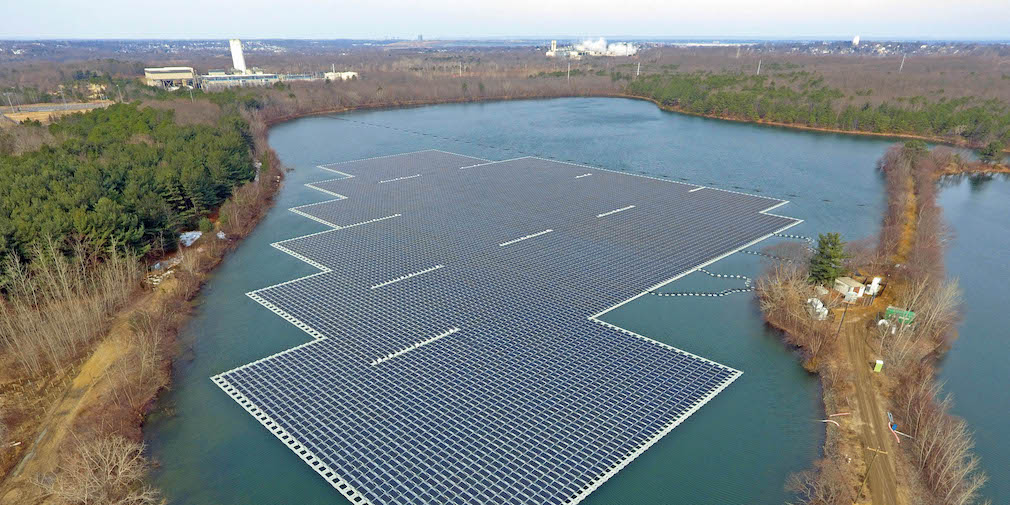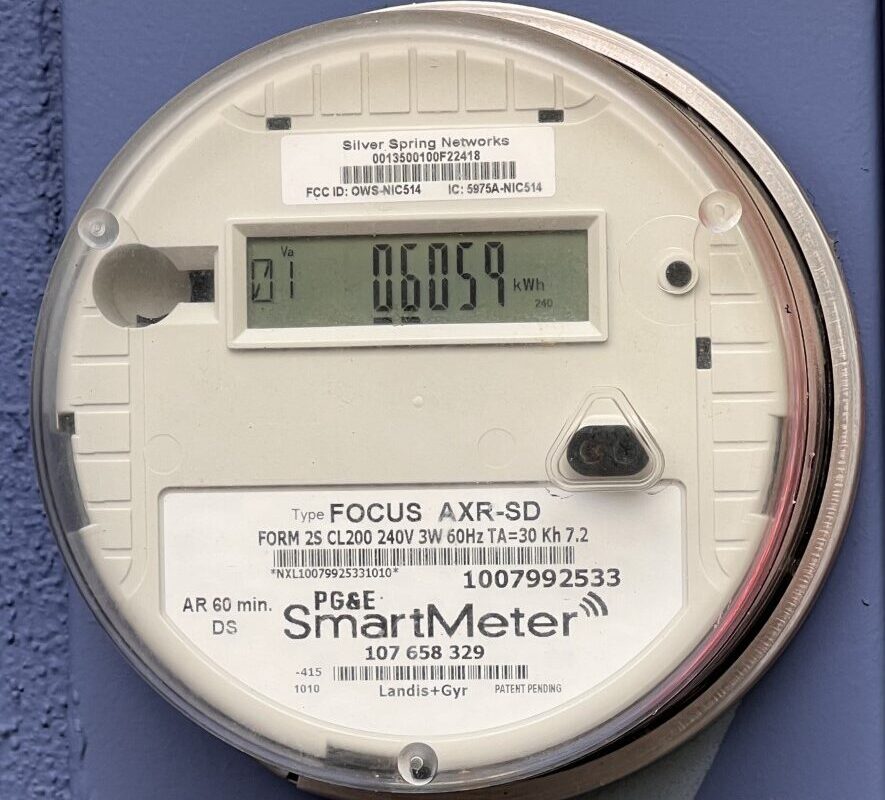Floating solar has long been an interesting technology, yet one that has been overshadowed by the prevalence of traditional PV and the inherent risks that water poses to solar projects. On the last day of last year, it was pegged by the U.S. Department of Energy’s National Renewable Energy Laboratories (NREL) as a “rapidly emerging technology,” with a corresponding report outlining the potential of the technology to reach 9.6% of current electricity generation.
Well, you cant get to 10% without taking some steps, which have been taken, as Ciel & Terre USA has installed a 4.4. MW floating solar array in Sayreville, New Jersey, which the company claims is the largest floating solar array in North America and is the largest in the continent known to pv magazine.
The project, which you can watch a super nifty YouTube video on below, came about in response to a 2015 request for proposals by the city for a solar installation under a power purchase agreement (PPA) to offset power use at a water treatment facility, as well as a handful of other government facilities.
Along with being the largest in North America, the installation is the second floating solar project completed in the Garden State. The project was constructed and developed by local developers J&J Solar Power LLC, Solar Renewable Energy LLC and with engineering by RETTEW Associates.
Internationally, floating solar initially tool off mostly in Japan, as the aforementioned NREL report stated that of the 200 MW installed globally by 2017, 80% of that capacity came from Japan. However, it is no longer 2017 and, as it is known to do, capacity has increased worldwide to 1.1 GW, a fact reported by the World Bank.
And, in terms of what that 9.6% of current generation figure really means, that NREL estimation is equivalent to 2100 GW, also known as 2.1 of the seldomly-used Terrawatts (TW). The methodology behind this estimation began with a dataset of all man-made reservoirs, with those used for recreation, navigation, fish and wildlife, those located more than 50 miles from a transmission line and small water bodies removed from the set. Of the remaining reservoirs, NREL assumed that 27% of the surface area could be covered with floating PV, based on the median coverage value of existing floating PV projects. The projection also assumed the technical factors of a fixed tilt angle of 11 degrees and a capacity density of 10,000 square meters per megawatt, both of which are common among existing floating PV projects.
We have a long, like inexplicably long way to go if we are to ever achieve 2.1 TW of floating solar. And it’s not like anyone has ever set a timetable for that, it’s just a surface usage area calculation. In the meantime, we celebrate Ciel & Terre USA, J&J Solar Power LLC, Solar Renewable Energy LLC and RETTEW Associates for their 4.4 MW accomplishment and award them the crown of the largest floating PV project in the country.
NOTE: This article was edited on 10/28/19 to correct the claim that the above project was the first floating solar project in New Jersey. The first was installed in 2011 in Canoe Brook, NJ., with a capacity of 112 kW. We apologize for the mistake.
This content is protected by copyright and may not be reused. If you want to cooperate with us and would like to reuse some of our content, please contact: editors@pv-magazine.com.









what happens when they’re covered in snow?
Until the snow melts or slides off, there isn’t much generation. Fortunately that is typically only for a short period of the year, and one where PV generation isn’t that high anyway.
I Southern California along the 5 freeway at the Northern tip of Los Angeles we have a water reservoir that use to be nice to look at. In order to reduce evaporation, the DWP covered it with thousands of black plastic balls. Not sure if water has really been saved, but it is now very ugly. The floating solar looks much better. Does it reduce water evaporation?
From what I have read, it does reduce evaporation.
how do you get out there in the middle to replace a bad panel?
We have a 125 MgW project in Florida. We also have a 25 acre pond. Who can I speak with in regards to floating solar? Thanks.